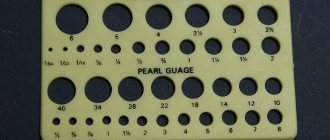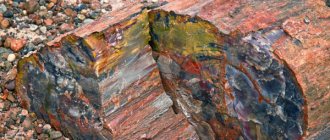The magnificent emerald stone belongs to the precious gems of the first order, that is, it is valued in the same way as diamond, corundum and wild pearls. Emerald is one of the varieties of beryl, which exists in nature in a large number of varieties. The most valuable among green beryls are considered to be Colombian emeralds mined in the Muzo mine, which is located near the capital of Colombia - Bogota. Such a stone is considered not only a valuable raw material for the manufacture of exclusive jewelry, but also a powerful amulet that can influence the fate and health of its owner.
Colombian emerald stone
Relevance of diagnosing the geographical origin of emeralds
In the last 15 years, the issue of determining the geographical origin of emeralds has become very relevant. Information about the emerald deposit is price determining and is important for both sellers and buyers of precious stones. For expensive high-quality emeralds, such information is especially significant.
The advertising and expertise of those involved in the international emerald market is the reason why these gemstones from mines that have long produced high-quality specimens are more expensive than emeralds with the same characteristics from other mines.
The phrase “Colombian emerald” has become a trademark despite the fact that Colombian stones can vary greatly in both color and quality. Many Colombian emeralds are indeed of high color and quality, but it is the brand associated with their origin that gives an additional increase to their value.
An experienced buyer who knows the peculiarities of the gem market, when choosing from several emeralds with the same characteristics, will choose an emerald from Colombia, and an emerald from any other deposit will be put aside. Zambian emeralds on the world market also have their own advertising brand, which makes them more attractive than stones from other deposits.
There are also regional preferences. For residents of the East, an Asian stone may be of interest; for a Russian, a green gem from the Urals may be desirable. For this reason, diagnostics of the geographical origin of emeralds is in great demand on the market and is one of the priority tasks of the gemological laboratory of the Gemcenter of Moscow State University.
Today, information about the geographical origin of precious stones can be determined by several methods, the main ones of which are listed below.
- Documentary method
In this case, the seller of the gemstone provides the buyer with a set of contracts documenting each stage of the purchase and sale and processing of the raw stone into the cut emerald offered for sale.
- Expert-instrumental ( gemmological ) method
Diagnostics are carried out in a gemological laboratory using modern research methods. According to specially developed methods for diagnosing the origin of emerald, its internal features and inclusions, spectroscopic, chemical and other properties are studied. The obtained data are compared with similar data on emeralds from a reference collection from precisely identified deposits. The degree of similarity of the properties of the studied emerald with the properties of stones from any deposit is revealed. An expert gemologist analyzes the set of information received and, in many cases, determines the geographic origin of the emerald.
- Nanomarker method
This method involves filling cracks in emeralds with a solution containing nano-markers right at the site of their extraction. This solution remains in the stone even after it has been cut. In the future, using a device for identifying nano-markers, it is possible to determine the deposit of the cut stone. Nanomarker technology was proposed relatively recently, is rarely used in practice nowadays and is the subject of discussion in professional gemological literature.
Each of the above methods has its own advantages and disadvantages. The documentary method may not be possible due to the lack of reliable documents; the use of the nanomarker method is currently extremely limited. The expert-instrumental method today is the most acceptable, accurate and is used by leading gemological laboratories in the world. However, he cannot always give a convincing conclusion about the geographical origin of the emerald.
The founder of diagnostics of the geographical origin of precious stones is the Swiss laboratory Gübelin Gem Lab, founded in 1923. In the middle of the 20th century, laboratory leaders began organizing expeditions to gem deposits in different countries. Laboratory employees personally extracted samples from the deposits and did not buy them secondhand. They went down into the mines, studied the dumps and collected stones with fragments of the host rocks. Thus, a collection of stones was formed in the laboratory, the connection of which to their deposit was precisely established. In the laboratory, the internal features of the stones were carefully studied: inclusions and structural features. As a result, photo atlases of inclusions in stones were compiled and published. For example, typical inclusions for Colombian emeralds have been described. In addition, inclusions in different Colombian deposits, such as Muzo or Kunas, were also found to have differences. This is not surprising, since the emerald belt of Colombia has a total length of 250 km.
At that time, stones from a small number of deposits were present on the international emerald market and it was quite easy to distinguish Russian, African or Colombian emeralds from each other. In the last two decades, the market situation has changed significantly, a number of new deposits have been discovered, and diagnosing the geographical origin of emeralds has become a difficult and at the same time very urgent task.
The meaning of the stone for the zodiac signs
Emerald is considered the stone of representatives of the signs Gemini, Taurus and Cancer.
Ring with emerald
For Gemini, the gem will become a source of composure and wisdom, because these are the qualities that representatives of this sign lack to make the right decision. Emerald will soften and reduce nervousness, restlessness and irritability, which are characteristic of Gemini. At the same time, it will strengthen memory, which will be very useful, given the sociability of this sign and its inherent talkativeness. The talisman will save Gemini from emotional distress - representatives of this sign will stop tormenting themselves, as well as tormenting others with their lamentation. Jewelry with this mineral will be useful for Geminis suffering from loneliness, who hide this fact under the guise of confidence and sociability, and for those who, for some reason, have limited communication with people.
For Taurus, who is close to the earth and nature, the rich green of the emerald will instantly bewitch with its magnificence. The gem will make the life of representatives of this sign more cheerful and bright if it becomes too slow and dull. Success is so important for Taurus that he can systematically and slowly move towards it for years. The magical properties of emerald will help realize Taurus’ plans in a shorter time. The green mineral will give the representative of this sign insight, concentration and wisdom, and will also give hope for a well-deserved reward awaiting Taurus at the end of the journey.
Necklace with emeralds
Probably the zodiac sign most in need of emerald's help is Cancer. Representatives of this sign are extremely vulnerable, sensitive and emotional, but they hide almost all their feelings and emotions under an impenetrable shell, which does not prevent them from suffering in the absence of an understanding loved one. Emerald will bring lightness to the heart and calm the emotional Cancer, and will teach him to control himself. Joy and fun are the best medicine for representatives of this sign, and this is what attracts the green gem. It will cure melancholy, thereby improving the life and well-being of Cancers. The Cancer owner of the amulet will become less withdrawn and constrained and gain self-confidence.
Emerald is neutral for Aries, Leo, Virgo, Sagittarius, Aquarius and Pisces. These signs may wear jewelry, but they will not feel the effects of the mineral.
Capricorns and Scorpios should not choose a natural emerald, as they are incompatible with the energy of the stone. If you really like a gem, it is better to opt for a synthetic analogue.
Main emerald deposits
In this work, we paid attention to three emerald deposits: in Colombia, Zambia and the Urals. Many years of practical experience in the gemological laboratory of the Gemcenter of Moscow State University and a large number of diagnosed emeralds show that emeralds from other deposits are less common on the Russian market.
Currently, there are more than 40 deposits and manifestations of emerald in the world. Emeralds from 15 deposits are the most common on the global gemstone market (Fig. 1). For this reason, studying the diagnostic characteristics of emeralds from various deposits is a complex, voluminous and urgent task. Most of the world's leading gemological laboratories pay special attention to separating emeralds from branded deposits, such as Colombian or Zambian, from emeralds from all other deposits.
Research over the last decade has shown that Colombian emeralds not only have high color and quality, but also a genesis that differs from that of emeralds from other deposits. Therefore, Colombian emeralds have very characteristic diagnostic features and are relatively easy to distinguish from emeralds from other deposits. At specialized courses at the Moscow State University Gem Center, students learn in practice the characteristic inclusions and other structural features, primarily in Colombian emeralds.
Rice. 1. Deposits, of which emeralds are the most common on the world market for precious stones.
Colombian emeralds are characterized by three-phase inclusions (consisting of liquid, solid and gaseous phases) with a characteristic “jagged” shape. However, recently emeralds from Afghanistan, China and other deposits with similar inclusions have begun to appear on the market. This is described in specialized gemological literature, and is confirmed by the observations of experts from the laboratory of the Gemcenter of Moscow State University.
Despite the fact that the study of inclusions is the most important tool for diagnosing the geographic origin of an emerald, it has now become obvious that it is not always sufficient. In recent years, gemological laboratories have used a combination of modern research methods for such diagnostics. The main methods are the so-called “three pillars” - microscopic studies, analysis of spectroscopic data, analysis of chemical data.
Some stones are easily diagnosed by characteristic inclusions, others require the additional use of spectroscopic data, and others require all three methods, including the determination of trace trace elements and other additional methods.
Colombian emeralds are the most sold and purchased all over the world, and Zambian emeralds, the production of which today accounts for 30-40% of global production, are undoubtedly found on the Russian market.
Russian Ural emeralds are now not widely distributed in the world, as they were a century ago, when the Urals were the main supplier of emeralds to the world market. However, as practice shows, Ural emeralds are regularly found on sale in Russia and often end up in our laboratory. In recent years, you can also find emeralds from Ethiopia on the Russian market, which are the object of research in our gemological laboratory and have been discussed in professional gemological literature since 2016.
This article is based on the results of a comprehensive study of emeralds from Colombia, Zambia and the Urals, the most commonly found emeralds on the Russian market. The research was carried out by the laboratory of the Gemological Center.
METHODS OF EXTRACTION OF SMARAGDS
Not everyone knows how emeralds are mined, and this is a very complex and sometimes dangerous process.
There are 2 main ways to mine emeralds: open pit and mine.
The choice of method depends on the depth of the formations and other geological conditions.
Open
The open pit method is used when rocks containing mineral deposits are exposed at or close to the surface. This method is used more often.
- In the Soviet Union, minerals were mined by open-pit mining at the Malyshevsky mine until 1971. The gems were located in a quarry at a depth of 150 m.
- In Brazil, it is common to cut off the top layer of soil to extract crystals.
- It is difficult to obtain permission for such work. Special authorities determine whether damage to nature will be caused. After completion of the work, the mining organization must return the natural landscape to its original form.
- In Colombia, at a mine in the town of Muzo, miners work under the supervision of the owner for 14 hours. The workers are called “Guajiro”. They look for gems in unsorted raw materials. Sometimes searches end in failure. If successful, the minerals are sold to resellers.
Recommended: All colors of RAINBOW TOPAZ
Methods and research
- Microscopy
Emeralds, even of very high quality, usually have many inclusions, and their study is an extremely important tool for diagnosing the geographical origin of emeralds. Gemologists divide emeralds into two large groups according to the inclusions observed in them: emeralds with “jagged” and “block” inclusions. These groups generally correspond to the two genetic groups of emeralds (hydrothermal and slate) and allow us to determine whether an emerald is Colombian or definitely not from Colombia. More detailed information about the genetic groups of emeralds is provided in the conclusion to this article.
Some inclusions are typical only of emeralds from specific deposits. A striking example of this is the inclusions in the well-studied emeralds of Colombia. They have a number of characteristic inclusions that allow them to be distinguished from emeralds from other deposits. However, such inclusions are often absent from the emerald under study, and then it is extremely difficult to distinguish it from other emeralds of hydrothermal deposits (for example, Afghan and Chinese) based on the study of inclusions.
- Spectroscopy
Registration and interpretation of absorption spectra in the visible and near-infrared regions (300-1000 nm) makes it possible with high probability to determine whether an emerald belongs to a hydrothermal or shale genetic group and to separate stones from Colombia, Afghanistan and China from emeralds from other deposits. Such conclusions are made based on the features of the absorption spectra associated with the main elements chromophores in emerald - Cr3+, Fe2+, Fe3+ and V.
- Chemical analysis of trace elements
Interpretation of data on the content of trace elements is a very informative diagnostic tool. The beryl crystal lattice has several unique positions of varying size and coordination that can be occupied by different trace elements. For diagnostics, data on the concentrations of Li, K, V, Cr, Fe, Rb and Cs are usually used. Today, there are several different methods for determining data on the concentration of impurity elements, differing in accuracy and lower detection limit. Comparison of the data obtained for the diagnosed emerald on the chemical composition of its microelements with similar data for emeralds of known origin often makes it possible to accurately determine the geographical origin of the gemstone.
No less important are other research methods introduced by our laboratory into the standard methodology for diagnosing emeralds. Such methods are the photoluminescence spectral method and Raman spectroscopy (Raman spectroscopy), used in conjunction with X-ray diffraction analysis.
In the gemological laboratory of the Gemcenter of Moscow State University, over more than 25 years of its work, a large number of emeralds from different deposits have been studied, some of which are currently in its own reference collection of samples with precise reference to the deposits. In 2022, the collection was significantly expanded with Russian Ural emeralds. In addition, to study the properties of emeralds, the Gemological Center of Moscow State University was provided with collections of Colombian and Zambian samples with reliable information about the place of their extraction. Employees of the gemological laboratory studied and analyzed the properties and characteristics of all available emeralds with a known geographical origin, the most important of which are the nature of the inclusions and internal features of the emeralds, their spectral features and data on the impurity chemical composition. In this article we present some results of our research.
Colombian emeralds
Most Colombian emeralds contain three-phase gas-liquid inclusions of a “jagged” shape, consisting of an aqueous solution, a gas bubble and a cubic isotropic crystal (or crystals) of halite. Diagnostic inclusions are three-phase gastrointestinal fluids larger than 500 microns in size. Common hard mineral inclusions are carbonates, pyrite, quartz, feldspar and fine black shale particles, however, these minerals are also found in emeralds from other deposits. Often, Colombian emeralds have diagnostic inclusions that are characteristic only of specific deposits in this country. Thus, coarse-crystalline carbonates and parisite fluorocarbonate are associated with the emeralds of the Muzo deposit, and albite, fresh or oxidized pyrite and graphite are found in the stones of the Chivor deposit. Typical inclusions in Colombian emeralds are shown in Fig. 2-4.
Rice. 2. Three-phase “jagged” inclusion with a cubic crystal and a gas bubble of approximately equal size in a Colombian emerald. Photo: D. Sinev, Moscow State University.
Rice. 3. Three-phase “jagged” inclusion with a cubic crystal and a gas bubble of approximately equal size in a Colombian emerald. Photo: D. Sinev, Moscow State University.
Rice. 4. Three-phase “jagged” inclusion with a gas bubble and a three-phase gas-liquid inclusion of irregular shape with a cubic crystal and a gas bubble of approximately equal size in Colombian emerald. Photo: D. Sinev, Moscow State University.
Colombian emeralds have a diagnostic characteristic of absorption spectra in the visible and near-infrared range, which is responsible for their famous “Colombian color”. This feature consists in the almost complete absence of absorption at wavelengths greater than 700 nm. The main chromophore in Colombian emeralds, Cr3+, causes strong absorption with broad peaks at wavelengths of 430 and 620 nm. There is a small absorption at 680 nm, caused by the spin-forbidden transition of Cr3+, and in the region of 960 nm, associated with vibrations of H2O. Typical transmission spectra (the inverse of absorption spectra) of Colombian emeralds are shown in Figure 5. Here and below, it is necessary to take into account the relationship of the spectrum peaks to each other, and not the absolute intensity of the peaks, which depends on the thickness of the sample under study.
Rice. 5. Typical transmission spectra of Colombian emeralds. Spectroscopy: V. Mishchenkova, GC MSU.
The chemical composition of Colombian emeralds is characterized by low concentrations of impurities of both alkali metals Li, Na, K, Rb and Cs, and Mg and Fe. Cr and V chromophores are present in a wide range of concentrations. Many Colombian emeralds have a Cr < V ratio, and their ratio varies over a very wide range. The La Pita emeralds contain Cr and V chromophores in greater quantities than other Colombian emeralds. Table 1 shows the concentrations of the main trace elements in Colombian emeralds.
Table 1. Ranges of impurity element content (wt.%) in Colombian emeralds.
| Na2O | Cs2O | MgO | Fe2O3 | Cr2O3 | V2O3 | |
| Polveros | 0,19-0,83 | ⋜ 0,04 | 0,23-1,26 | 0,02-0,09 | 0,02-0,17 | 0,05-0,20 |
| Kunas | 0,17-0,66 | ⋜ 0,04 | 0,21-0,29 | 0,02-0,09 | ⋜ 0,05 | ⋜ 0,10 |
| Cosques | 0,14-0,47 | ⋜ 0,04 | 0,15-0,67 | 0,04-0,07 | ⋜ 0,03 | 0,02-0,23 |
| La Pita | 0,13-0,47 | ⋜ 0,04 | 0,21-0,72 | 0,02-0,06 | ⋜ 0,19 | 0,06-0,21 |
Ural emeralds
Typomorphic inclusions of Ural emeralds are amphiboles in the form of “sticks” or needles, thick needles of green actinolite, brown mica plates (Fig. 6-7). In Ural emeralds one can also find iridescent thin films, fluid inclusions of both “blocky” and elongated shapes, and growth tubes.
Rice. 6. Tremolite-actinolite inclusions, typical of Ural emeralds. Photo: D. Sinev, Moscow State University.
Rice. 7. Tremolite-actinolite inclusions and mineral inclusions typical of Ural emeralds. Photo: D. Sinev, Moscow State University.
Ural emeralds, like other iron-containing emeralds of the schist genetic type, have an intense broad absorption band with a peak around 830 nm and a small peak at 380 nm, due to the presence of Fe2+ and Fe3+, which are absent in Colombian emeralds. Characteristic intense absorption bands at wavelengths of 430 and 620 nm and peaks around 640 and 680 nm, caused by impurity Cr3+. There is absorption at 960 nm associated with vibrations of H2O molecules. The nature of the small peak at 850 nm is currently difficult to explain. Typical transmission spectra of Ural emeralds are shown in Figure 8.
Rice. 8. Typical transmission spectra of Russian Ural emeralds. Spectroscopy: V. Mishchenkova, GC MSU.
Emeralds of the Urals are characterized by a significantly higher content of alkali metal impurities, as well as Mg and Fe, and belong to sodium beryl (Na2O > 0.5%). Russian emeralds are rich in Cs, which causes higher density values for these samples. Table 2 shows the concentrations of the main trace elements in Colombian emeralds.
Table 2. Ranges of content of impurity elements (wt.%) in Ural emeralds.
| Na2O | Cs2O | MgO | Fe2O3 | Cr2O3 | V2O3 | |
| Ural | 0,53-1,53 | ⋜ 0,11 | 0,29-1,55 | 0,06-0,45 | ⋜ 0,16 | ⋜ 0,05 |
Properties of the stone
Emerald is a variety of beryl whose color is provided by impurities of vanadium, iron or chromium.
The gem is transparent, the strength on the Mohs scale is 7.5-8 points. The mineral has a glassy luster and an uneven conchoidal fracture, and is resistant to acids and alkalis. When heated above 700°C, the emerald becomes discolored.
This type of beryl is characterized by the effect of dichroism - a change in color under different lighting angles.
Zambian emeralds
Zambian emeralds are mined from two deposits - Kafubu and Musakashi. These deposits have fundamentally different genesis and the emeralds mined from them have significantly different properties. Kafubu emeralds are more common on the market and their properties will be described below.
Zambian emeralds from the Kafubu deposit often contain multiphase gas-liquid inclusions of “blocky” or irregular shapes. Sometimes tubular-shaped gas-liquid inclusions may occur. Mica is a common inclusion and is brownish in color and has a rounded or green pseudo-hexagonal platelet shape. Black platelets or dendrites of oxide minerals and elongated crystals of amphibole may occur, as well as inclusions of apatite, pyrite, talc, barite, albite and calcite. Inclusions in Zambian Kabufu emeralds are shown in Figures 9-13.
Inclusions in the Zambian Musakashi emeralds are two-phase and three-phase gas-liquid inclusions, which may be similar to the irregularly shaped “jagged” gas-liquid inclusions in the Colombian, Afghan and Chinese Davdara emeralds. Typical inclusions are mica flakes, iron oxides, and dark and light mineral inclusions.
Rice. 9. Tubular two-phase gas-liquid inclusions in the Zambian Kafubu emerald. Photo: D. Sinev, Moscow State University.
Rice. 10. “Blocky” two-phase gas-liquid inclusions, typical of Zambian Kafubu emeralds. Photo: D. Sinev, Moscow State University.
Rice. 11. “Blocky” two-phase gas-liquid inclusions, typical of Zambian Kafubu emeralds. Photo: D. Sinev, Moscow State University.
Rice. 12. Numerous mica inclusions, typical of Zambian Kafubu emeralds. Photo: D. Sinev, Moscow State University.
Rice. 13. Typical two-phase gas-liquid inclusions and numerous mica inclusions in the Zambian Kafubu emerald. Photo: D. Sinev, Moscow State University.
Inclusions in Zambian emeralds are not diagnostic, so diagnosing them requires other diagnostic procedures.
The absorption spectra of Zambian Kafubu emeralds are characterized by intense absorption in the range of 760-930 nm, associated with Fe2+ impurities, as well as broad absorption bands at 430 and 620 nm and narrow peaks at 640 and 680 nm, caused by Cr3+ chromophore impurities. The nature of the absorption at 340 nm observed in some Zambian Kafubu emeralds is currently unknown.
Typical transmission spectra of Zambian emeralds from the Kafubu deposit are shown in Figure 14.
Rice. 14. Typical transmission spectra of Zambian emeralds from the Kafubu deposit. Spectroscopy: V. Mishchenkova, GC MG U.
Kafubu emeralds from Zambia are rich in trace alkali metals Li, Na, K, Rb, Cs, Mg and Fe, as well as Ti, Sc, Mn, Ni and Zn. It should be noted that the concentrations of Fe, as well as Cs and Li in the Zambian Kafubu emeralds are among the highest. The concentration of the Cr chromophore is always higher than the concentration of V, and their ratio ranges from 8 to 40.
As an illustration, Figures 15 and 16 show X-ray fluorescence spectra, which allow both qualitative and quantitative determination of the content of chemical elements from Be to U. In the Zambian Kafubu emeralds, impurities of Fe, Cr, V, Cs were discovered by this method in the gemological laboratory of the Gem Center of Moscow State University , Rb, Zn and Ga.
Rice. 15. Cs impurity in the Zambian Kafubu emerald on the XRF spectrum.
Rice. 16. Impurities of V, Cr, Fe, Zn, Ga and Rb in the Zambian Kafubu emerald on the XRF spectrum.
Medicinal properties
Lithotherapists claim that emerald stone can stabilize blood pressure and relieve both joint pain and headaches. It also treats inflammation of the bladder and stomach diseases. It has been proven that the gem has antibacterial properties - if you hold the mineral in a glass of raw water, you can drink it without boiling.
In ancient times, it was believed that the crystal had the power to save a person from night blindness, eyesores, and epilepsy.
Modern lithotherapists claim that the wearer of emerald is not at risk of insomnia, nightmares, increased fatigue and unreasonable fears.











